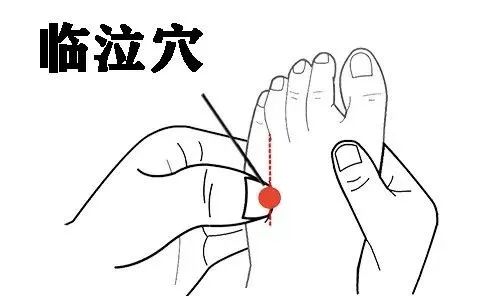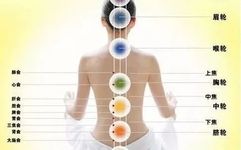The Eight Extraordinary Meridians refer to the Du Mai (Governing Vessel), Ren Mai (Conception Vessel), Chong Mai (Penetrating Vessel), Dai Mai (Belt Vessel), Yin Wei Mai (Yin Linking Vessel), Yang Wei Mai (Yang Linking Vessel), Yin Qiao Mai (Yin Heel Vessel), and Yang Qiao Mai (Yang Heel Vessel). Unlike the twelve regular meridians, they do not directly connect to the organs and do not have a paired relationship, hence they are called “extraordinary meridians”.
Beyond the twelve regular meridians, the human body has a more important balancing system, which is the Eight Extraordinary Meridians. The Eight Extraordinary Meridians are our lifelines; by stimulating the major acupoints on these meridians daily, we can open the meridians and allow the Qi to flow, resulting in a sensation of clear Yang energy in the body.
The Eight Extraordinary Meridians regulate the accumulation and infusion of Qi and blood in the twelve meridians. Among the eight meridians, there are eight representative acupoints: Gong Sun (Gong Sun), Nei Guan (Nei Guan), Lin Qi (Lin Qi), Wai Guan (Wai Guan), Shen Mai (Shen Mai), Hou Xi (Hou Xi), Lie Que (Lie Que), and Zhao Hai (Zhao Hai).
Each acupoint is akin to a “nuclear reactor“, treating a large area at once. Regular acupuncture stimulation of these acupoints can unblock the meridians, harmonize Qi and blood, strengthen the body, expel pathogens, and balance Yin and Yang, thus playing a role in disease prevention and health maintenance.
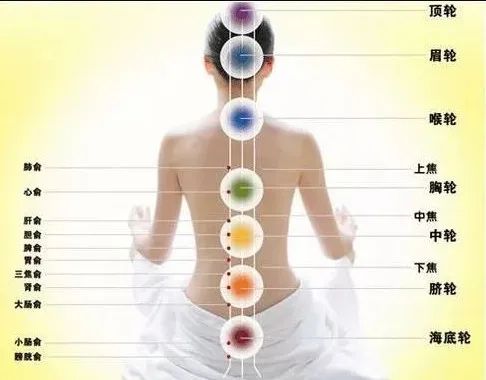
Nei Guan Acupoint: Nourishing Beauty and Heart
The Nei Guan acupoint belongs to the Pericardium Meridian, connects with the Ren Mai, and is one of the meeting points of the eight meridians. The true efficacy of the Nei Guan acupoint lies in its ability to open the body’s internal mechanisms, benefiting Qi and blood, calming the mind, and enhancing beauty.
Many women between the ages of 40 and 50 often experience symptoms such as palpitations, shortness of breath, and night sweats. Hospitals may not identify a specific illness, often labeling it as menopausal syndrome or sub-health.
Traditional Chinese Medicine (TCM) believes that this age range marks a stage of decline in women’s health. Aging in women begins with the Yangming Meridian, gradually leading to a decline in the Qi and blood of the three Yang meridians. As the head is the meeting point of all Yang, when Qi and blood cannot reach the face, wrinkles and spots appear.
Beauty is closely related to Qi and blood. The heart governs the spirit, and its radiance is reflected on the face. The spirit of the heart relies on Qi and blood for nourishment; when Qi and blood are abundant, it naturally reflects on the face. Therefore, to nourish beauty, women must first nourish the heart.

Wai Guan Acupoint: The Acupoint for Hearing
The Wai Guan acupoint is a connecting point of the San Jiao Meridian, linking with the Yang Wei acupoint, and has the functions of dispelling exterior pathogens, eliminating wind, and relieving pain. It is not only effective for acute lumbar sprains but also has good effects on arthritis and cervical spondylosis.
TCM believes that temporary hearing issues are manifestations of insufficient Yang Qi in the body. The Wai Guan acupoint can enrich the original Yang Qi of the San Jiao and guide the original Qi to circulate throughout the body.
When this acupoint is blocked, it can cause the eardrum to become slack and unable to return to its normal state. Clinically, the Wai Guan acupoint can also be used to treat acute lumbar sprains.
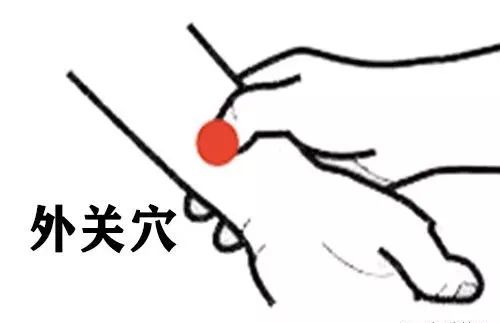
Lie Que Acupoint: Treating Stiff Neck and Migraine
Almost everyone has experienced a stiff neck, which can be quite painful. A stiff neck can also be an early signal of cervical spine issues. Those who frequently suffer from stiff necks, if not promptly adjusted and prevented, are likely to develop cervical spondylosis.
The Lie Que acupoint has unique effects in preventing cervical spondylosis. On the human body, the Lie Que acupoint serves as a tool for repairing head-related ailments, primarily treating migraines, headaches, and stiff necks.
In the “Acupuncture” text, there is a well-known verse about the four major acupoints, one line states: “For neck and head issues, seek Lie Que.” This means that ailments above the neck can be treated and adjusted using this acupoint.
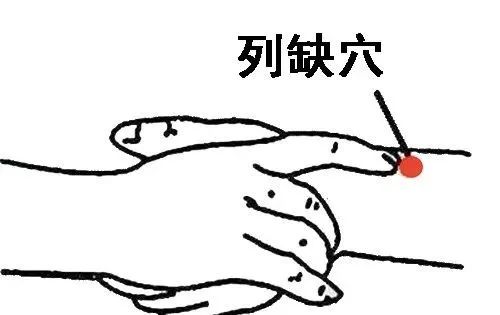
Hou Xi Acupoint: Improving Cervical and Lumbar Spine Issues
The Hou Xi acupoint is first mentioned in the “Ling Shu” and belongs to the Hand Taiyang Small Intestine Meridian. It is the transport acupoint of the Hand Taiyang Small Intestine Meridian and a meeting point of the eight meridians, connecting with the Du Mai.
TCM believes that the Hou Xi acupoint has the effects of clearing heat, promoting dampness, calming the mind, and activating blood circulation. Regular stimulation of this acupoint can alleviate cervical pain, lumbar pain, and leg pain, and also has benefits for vision protection, fatigue relief, and replenishing essence and Qi.
If you sit in front of a computer, you can place the area of the Hou Xi acupoint on the edge of the table, using your wrist to roll your hands back and forth easily to achieve stimulation.
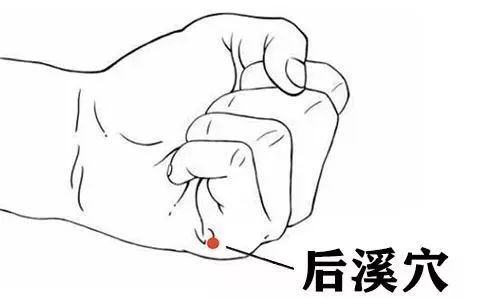
Zhao Hai Acupoint: Treating Throat Pain
The Zhao Hai acupoint belongs to the Yin Qiao among the Eight Extraordinary Meridians, connecting with the Foot Shaoyin Kidney Meridian, and is one of the key meeting points of the eight meridians. It has the functions of nourishing the kidneys, clearing heat, and regulating the San Jiao, providing both nourishment and heat-clearing effects.
Sun Simiao in the “Qian Jin Fang” referred to this acupoint as “Liu Yin”, indicating that when this acupoint is problematic, the body’s kidney water decreases, leading to kidney Yin deficiency and causing the rise of empty heat.
Regular stimulation of this acupoint can activate the essence and Qi in the kidneys, promote the upward movement of fluids, and moisten the throat. When the empty heat is nourished by kidney water, it descends, and throat pain will naturally be alleviated.
Therefore, whenever we feel chest tightness, dry throat, hoarseness, or even chronic pharyngitis, we can stimulate this acupoint, which can both nourish the kidneys and clear heat, as well as ensure the smooth functioning of the San Jiao.

Shen Mai Acupoint: Warming Yang and Dispelling Cold
The Shen Mai acupoint belongs to the Bladder Meridian and is known as “the utmost Yang among Yangs”. It can dispel cold pathogens from the body and allow Yang Qi to reach the summit, playing a balancing role in the body and enabling agile movement.
When the body is affected by cold pathogens, it tends to curl up and shiver, which in TCM is referred to as “contraction and pulling in”. The Shen Mai acupoint has the meaning of stretching the meridians, quickly mobilizing the body’s Yang Qi; when Yang Qi is sufficient, cold pathogens are dispelled.
Stimulating this acupoint can expel cold pathogens from the body in a short time and restore one’s Yang Qi, improving symptoms such as back pain and leg pain.
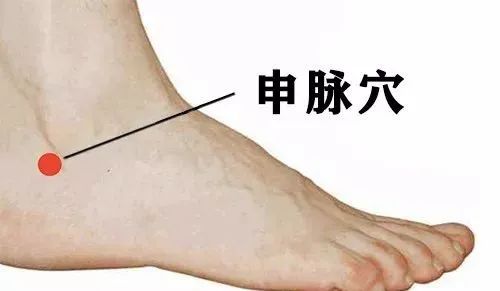
Gong Sun Acupoint: Balancing Spleen and Stomach Disorders
The Gong Sun acupoint is a connecting point of the Spleen Meridian, associated with the spleen and linked to the stomach, and directly connects with the Chong Mai located in the chest and abdomen, thus it has the effect of treating various disorders of the spleen, stomach, and abdominal area.
TCM believes that treating all gynecological diseases should start with the spleen and stomach. The spleen governs blood and is responsible for transformation and transportation. When the spleen and stomach are deficient and cold, they cannot transform dampness, leading to dysmenorrhea, which may also be accompanied by symptoms such as vomiting, nausea, and headaches.
Women with dysmenorrhea can frequently stimulate the Gong Sun acupoint. It can tonify the spleen and stomach, calm the mind, promote Qi and blood circulation, nourish Yin, and reduce fire, improving conditions of spleen deficiency and kidney weakness.
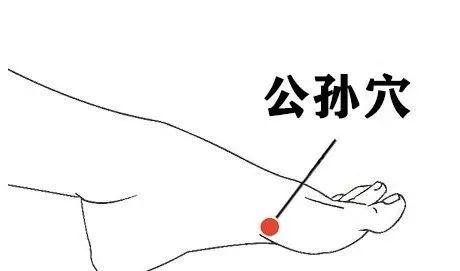
Lin Qi Acupoint: Elevating Shao Yang Qi
The Lin Qi acupoint is one of the main acupoints on the Gallbladder Meridian, connecting with the Dai Mai, and is a wonderful acupoint that regulates one acupoint while harmonizing two meridians. It has the effects of soothing the liver, extinguishing wind, resolving phlegm, and reducing swelling, as well as relieving fatigue.
The Dai Mai runs around the navel, like a jade belt tied around the center of the body, which can restrain the longitudinal meridians and enhance the connection of Qi and blood flow between the meridians, making it a very important health meridian for the body.
The Zu Lin Qi acupoint primarily elevates the Shao Yang Qi of the body, dispersing the Qi stagnation of the liver and gallbladder. Regular acupressure can be more effective than professional foot therapy. This acupoint is also a blessing for women, as it can treat various gynecological diseases.
